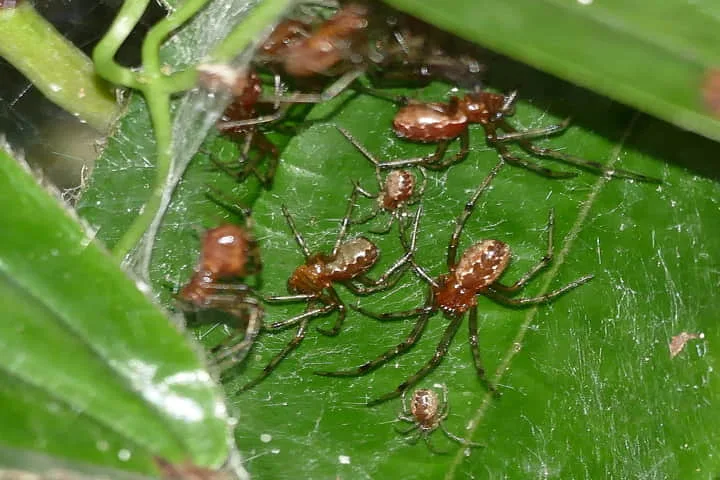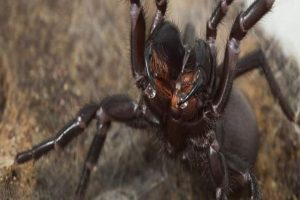It is amazing to see spiders attack their prey in packs but it has always intrigued scientists as to how the coordinated offensive takes place. This is precisely what a team of researchers decided to study, says a report in sciencealert.com.
Among 50,000 known species of spiders there are 20 which, contrary to their usual solitary life, live together in colonies. One of them is Anelosimus eximius, a social spider which lives in a large group of more than 1,000 individuals, who spin webs that span many metres.
When a victim is trapped, these creatures harmonise their attack together enabling them to tackle prey much larger than them individually.
Also read: Beware of the snake’s hiss, the reptile means business
Till now it was a puzzle as to how such coordinated effort takes place but new research reveals that using vibrations in the giant-sized webs is what helps these creatures to synchronise their attack on the prey.
Senior author of this new study, Raphael Jeanson who is researcher at the Research Centre on Animal Cognition (CRCA) at the University of Toulouse, France, highlights an important aspect about this coordinated offence. “What is fantastic is that there is no leadership role among these spiders.” In fact, the colony’s attack in unison is based on each and every individual receiving the same information.
There are two movement stages of this attack on the victim by the colony. These are closing in on the prey and then becoming still. These two movements help the spiders to time their approach and help them to strike at the same time.
To study and learn about this method, the researchers used field observations and computer simulations. What Jeanson and his team discovered was that the entire assault is helmed completely by the vibrations in the shared web.

The web spun by Anelosimus eximius can extend to many metres
Explaining it to Live Science, Jeanson said: "When the prey falls in the web, this triggers the movement of the spiders. But after a while, they all stop for a few milliseconds before they start moving again."
The scientists used a dead fly which was glued to the end of a vibration generator to tempt the spiders and this proved that their hunting instincts and conduct was purely guided by the helpless prey’s struggle to get free. Yet, it did not throw light on the coordinate movements of the colony.
To help understand this aspect, the researchers used a computer model. These models unveiled that vibrations by the prey do initiate the first movements but it was the oscillations of the spider colony that helped the spiders to coordinate their charge.
Also read: Why snakes survived while Dinosaurs perished 66 Million Years Ago
Thus in the beginning, sensing the prey’s movement, the group starts moving but when they all move, the steps of these hundreds of spiders also make the fibres of the web tremble and thus send out vibrations which blur and cloud the sounds of the trapped victim. Making an apt comparison, Jeanson said: "It's a bit like when you are in a room with people chatting.”
Every step the spider makes leads to noise and therefore, they need to stop moving to help to listen to the prey to ensure that they are moving in the correct direction, that is towards the prey.
Inversely, if the struggling victim is quiet, it becomes much harder and difficult for the spiders to coordinate their stop-and-go movements. On the other hand the more intensely the prey vibrated, the colony needed to be less quiet and so they were less synchronised, observed the researchers.
Details of this new study were published in the journal Proceedings of the National Academy of Sciences.




















